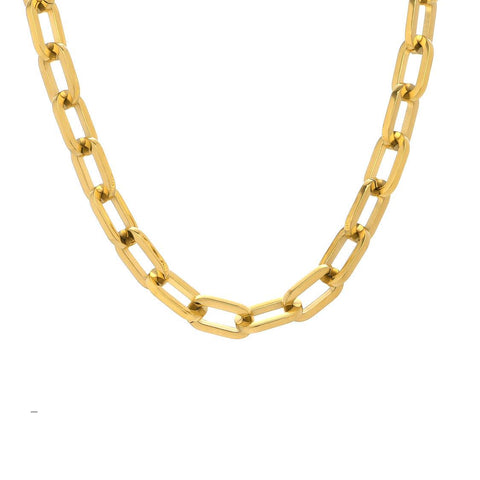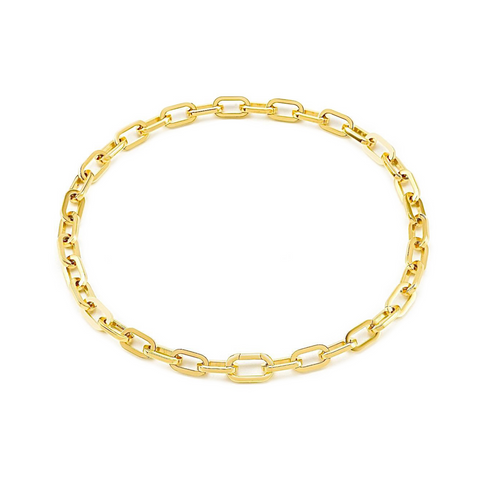C200G B.Tiff High Polish Paperclip Gold Plated Stainless Steel Chain Necklace




C200G B.Tiff High Polish Paperclip Gold Plated Stainless Steel Chain Necklace
Simple, ageless and versatile with a hint of independence and resistance, the paperclip design appeals to all states and suits all styles. It can be worn for all occasions to hold its own as a stand along piece and also pairs well with other styles as a great layering element. Our paperclip link chain necklace is made with the highest grade surgical stainless steel that is tarnish resistant, durable, with long lasting bright metallic shine.
We offer customization with a nominal fee. Choose "Custom" for length and leave us a note at check out for your desired length!
Specifications:
- Customizable Length Upon Request
- Surgical Stainless Steel
- Hypoallergenic
- Natural color of stainless steel and Gold Plated available
- Link Width: 2.5mm
- Link Length: 28mm
- Product #C200G
A fun trivia: The paperclip was used as a symbol of resistance during World War II.
In April 1940, Adolf Hitler needed a way to break the Allied blockade of Germany. That way was Norway, a country that had declared itself neutral in the war. Hitler wanted control of Norwegian waters to make transporting goods into Germany a little bit easier. After a few months of struggle, the Germans successfully began occupying Norway, driving out Allied troops and passing Anti-Jewish legislation.
The Norwegian royal family and government were also driven away, forced to conduct business from exile in England. Meanwhile, the people of Norway lived under German rule. The Germans attempted to strip away Norway’s culture and replace it with Nazi ideals. Norwegian teachers were told to join the Nazi Party and teach Nazism in classrooms, and the church was told to teach “obedience to the leader and the state.” The people of Norway also had to deal with German soldiers day in and day out for five years. By 1945, some 400,000 German troops were operating in Norway, controlling the population of about 4 million people.
Symbols related to the royal family and state had already been banned, and the Norwegian people wanted a clever way of displaying their rejection of the Nazi ideology. In the autumn of 1940 students at Oslo University started wearing paperclips on their lapels as a non-violent symbol of resistance, unity, and national pride. In addition to wearing a single paperclip, paperclip bracelets and other types of jewelry were fashioned as well, symbolically binding Norwegians together in the face of such adversity.
Why the paperclip? Besides the idea of binding things together, it’s thought the paperclip was chosen as a symbol of resistance in part because many people incorrectly believed that the inventor of the paperclip was a Norwegian man, John Vaaler in 1901. Though the modern paperclip was actually invented two years prior in 1898 by William Middlebrook who patented a machine that would make wire paper clips for the Gem Company, in England.
Nevertheless, the idea that the paperclip was invented by a Norwegian man was prevalent and the fact that paperclips bound things together and were cheap, readily available, and not out of place made it seemingly the perfect symbol for non-violent, subtle resistance in Norway.
In time, the Germans caught on to the fact that the paperclip was being used as a symbol of resistance and wearing a paperclip promptly became a criminal offense.
FAQ
Having questions about B.Tiff items? Need care tips for your cherished B.Tiff jewelry? Check out our Frequently Asked Quetions list for answers to the most asked questions by our customers.
Shipping Policy
B.Tiff wholesale team works hard to package and ship orders with speed and precision. Check out our detail shipping details in our Shipping Policy.
Warranty
B.Tiff always stands behind our products and provides one of the best terms for warranty and exchanges in the industry. Check out our policy for Warranty & Exchange.
